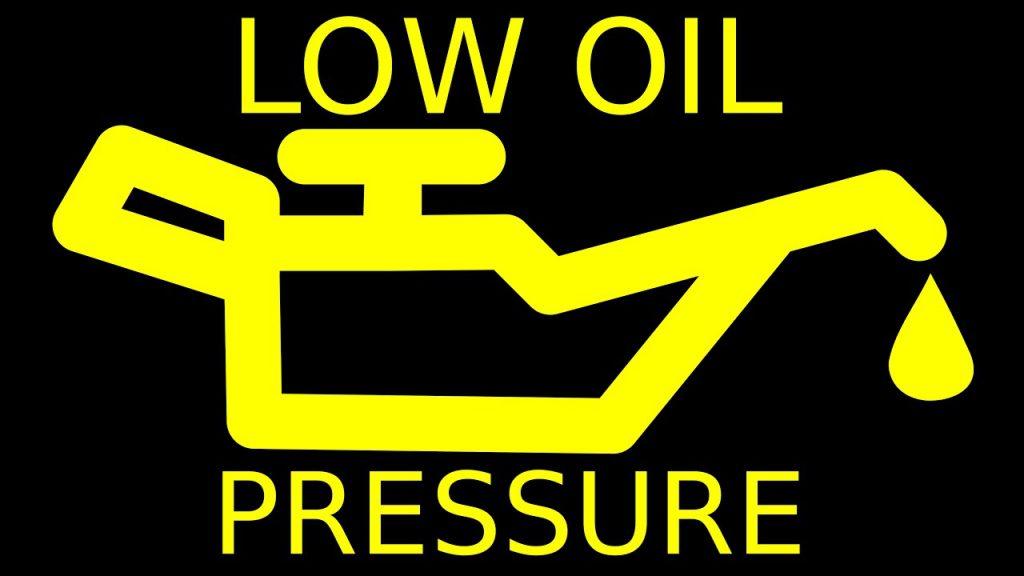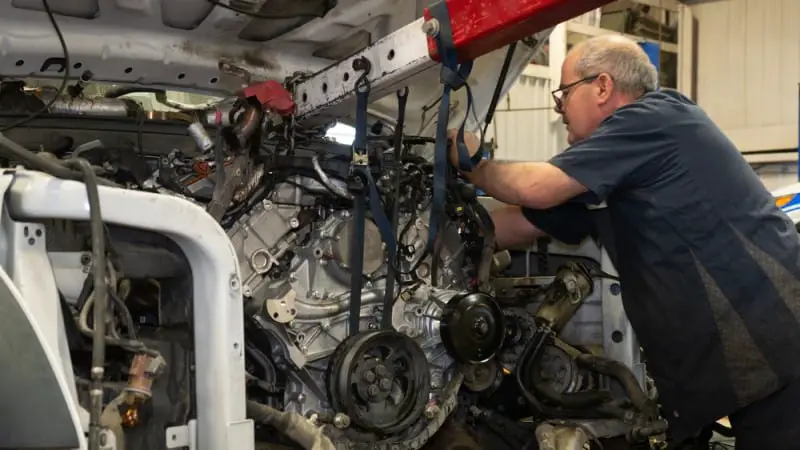Have you ever wondered why your car might be showing low oil pressure after an oil change?
It’s a common concern that can leave you scratching your head.
The answer isn’t always clear, but fear not – we’re here to shed some light on the situation without getting into complicated car talk.
After you’ve freshened up your engine with a new batch of oil, it’s natural to expect everything to run smoothly.
However, when you notice that the oil pressure gauge acting a bit lower than usual, it can be a cause for concern.
In this article, we’ll break down the common reasons behind low oil pressure post-oil change, helping you understand what might be going on under the hood in plain and simple terms.
Let’s get started on demystifying this automotive puzzle.
What Are The Reasons Why My Car Has Low Oil Pressure After Oil Change?
-
Incorrect Oil Grade
Using the wrong type of oil can be a major culprit behind low oil pressure after a change. Car engines are designed to operate optimally with a specific oil viscosity. If the oil you’ve selected is too thick or too thin for your vehicle, it can impede proper lubrication and result in lower oil pressure. Always consult your car’s manual to ensure you’re using the recommended oil grade.
-
Oil Filter Issues
A clogged or improperly installed oil filter can hinder the smooth flow of oil through the engine. When the filter is dirty or not fitted correctly, it obstructs the passage of oil, causing pressure to drop. Ensure you replace the filter during each oil change, following the manufacturer’s guidelines, and check for any signs of is installation.
-
Oil Leaks
Leaking oil is akin to money slipping through your fingers. Even a small leak can lead to decreased oil levels and subsequently lower oil pressure. Inspect your engine and surrounding areas for any signs of oil puddles or drips. Addressing leaks promptly is crucial to maintaining proper oil pressure and preventing potential engine damage.
-
Oil Pump Malfunction
The oil pump is the heart of your car’s lubrication system, and if it’s not pumping effectively, problems arise. A worn-out or malfunctioning oil pump may struggle to circulate oil efficiently, leading to low pressure. Regular maintenance checks are essential to catch any issues with the oil pump early on and ensure it continues to operate smoothly.
-
Air Pockets in the Oil System
During an oil change, air can find its way into the oil system, creating pockets that disrupt proper oil circulation. This can result in temporary low oil pressure until the air is expelled. To minimize this risk, fill the oil slowly and allow the engine to run for a few minutes before rechecking the oil level.
-
Overfilled Oil Level
While it may seem counterintuitive, having too much oil in your engine can be as problematic as having too little. An overfilled oil level can cause excessive pressure, leading to foaming and a drop in oil pressure. Follow the recommended oil capacity for your vehicle, and double-check your levels after the initial oil change to ensure accuracy.
-
Worn Engine Bearings
Over time, engine bearings can wear down, affecting the gap between moving parts. When this happens, the oil pressure may decrease as a consequence. Regularly scheduled oil changes and using high-quality oil can contribute to extending the lifespan of engine bearings, preventing premature wear and maintaining adequate oil pressure.
-
Faulty Pressure Relief Valve
The pressure relief valve is a safety mechanism in your engine that regulates oil pressure. If this valve becomes faulty or gets stuck, it can disrupt the balance of pressure in the system, leading to lower-than-normal oil pressure. Regular inspections and, if necessary, replacement of the pressure relief valve can help maintain a consistent oil pressure level.
-
Oil Degradation
Over time, engine oil naturally breaks down due to heat, contaminants, and usage. If you neglect regular oil changes, the oil can lose its lubricating properties, resulting in increased friction and decreased oil pressure. Stick to your recommended oil change intervals to ensure the engine receives fresh, effective lubrication.
-
Worn or Failing Oil Pressure Sensor
The oil pressure sensor is responsible for sending signals to your car’s gauge, indicating the oil pressure level. If this sensor is malfunctioning or nearing the end of its lifespan, it can provide inaccurate readings, leading to concerns about low oil pressure. Replace the sensor if necessary, ensuring your pressure gauge provides reliable information for timely maintenance.
Related Post: Why Is There Oil All the Way Up the Dipstick? WHY?
Related Post: Driving With A Bad Oil Pressure Sensor: Any Real Risks?

How do you fix low oil pressure in a car?
Fixing low oil pressure in a car involves identifying the root cause and taking appropriate measures. Here’s a straightforward guide to address this issue:
Check Oil Level
- Ensure that the engine has the correct amount of oil. Consult your car’s manual for the recommended oil capacity.
- If the oil level is low, add the appropriate oil grade in small increments, allowing time for the oil to circulate.
Verify Oil Grade and Quality
- Confirm that you are using the correct oil grade as specified in your car’s manual.
- Use high-quality oil to ensure proper lubrication and prevent premature wear on engine components.
Inspect for Leaks
- Look for oil leaks under the car and around the engine. Address any leaks promptly to prevent further oil loss.
- Check the oil pan, gaskets, and connections for signs of oil seepage.
Replace the Oil Filter
- Ensure the oil filter is the correct type and properly installed.
- Replace the oil filter with a new, high-quality filter according to the manufacturer’s recommendations.
Examine the Oil Pressure Sensor
- Test or replace the oil pressure sensor if it’s faulty or nearing the end of its lifespan.
- A functioning sensor ensures accurate readings on your oil pressure gauge.
Inspect the Pressure Relief Valve
- Check the pressure relief valve for proper functioning. If it’s stuck or faulty, consider replacing it to regulate oil pressure effectively.
Check the Oil Pump
- Inspect the oil pump for any signs of wear or malfunction.
- If the oil pump is compromised, consider replacing it with a new one to ensure proper oil circulation.
Address Air Pockets
- If air has entered the oil system during the oil change, run the engine for a few minutes to allow the air to escape.
- Recheck the oil level after running the engine to ensure it is at the correct level.
Evaluate Engine Bearings
- Monitor the condition of engine bearings, as worn bearings can contribute to low oil pressure.
- Regularly scheduled oil changes with high-quality oil can help prevent premature wear on engine bearings.
Consult a Professional Mechanic
- If you are unable to identify or fix the issue, or if you’re uncomfortable performing these checks, consult a professional mechanic.
- A mechanic can conduct a thorough inspection and address any underlying problems that may be causing low oil pressure.
Why is my oil pressure low but oil level ok?
If you find yourself asking, “Why is my oil pressure low when the oil level is okay?” it’s essential to understand that oil pressure and oil level are two distinct aspects of your engine’s lubrication system. While the oil level might be within the acceptable range, several factors could contribute to a drop in oil pressure.
One common culprit is a malfunctioning oil pump. The oil pump is responsible for circulating oil throughout the engine, and if it’s not functioning correctly, the pressure can suffer.
Wear and tear over time or issues with the pump’s internal components can hinder its ability to effectively push oil, leading to lower-than-optimal pressure even with a sufficient oil level. Regular maintenance checks can help catch potential problems with the oil pump early on.
Another potential cause is a clogged or inefficient oil filter. The oil filter plays a crucial role in trapping contaminants and preventing them from circulating through the engine. If the filter becomes clogged or is not replaced during routine maintenance, it can obstruct the flow of oil, resulting in decreased pressure. Regularly changing the oil filter according to the manufacturer’s recommendations is key to maintaining a healthy lubrication system.
Additionally, issues with the oil pressure sensor could contribute to misleading readings on your dashboard gauge. A faulty sensor may inaccurately indicate low oil pressure even when the pressure is within the normal range.
Checking and, if necessary, replacing the oil pressure sensor can ensure that the gauge provides reliable information about the actual state of your engine’s oil pressure, providing peace of mind for the health of your vehicle.
How do you restore engine oil pressure?
Restoring engine oil pressure involves a systematic approach to address the underlying causes. Begin by checking and correcting the oil level, ensuring it aligns with the manufacturer’s recommendations.
If the oil level is satisfactory, proceed to inspect the oil filter for clogs or improper installation, replacing it if necessary. Verify the oil grade and quality, opting for the recommended type to facilitate optimal lubrication.
Address any potential leaks promptly and examine the oil pressure sensor for accuracy. If the issue persists, evaluate the functionality of the oil pump, replacing it if wear or malfunction is detected.
Running the engine to expel air pockets and regularly monitoring engine bearings for signs of wear are additional steps in the restoration process.
Consulting a professional mechanic may be prudent if DIY efforts do not resolve the low oil pressure concern, ensuring a comprehensive evaluation of the engine’s health.
How do I know if my oil pump is bad?
Determining if your oil pump is malfunctioning involves observing certain symptoms and conducting basic checks. Here are indicators that your oil pump might be bad:
Low Oil Pressure Warning Light
- The low oil pressure warning light on your dashboard illuminates.
- Note that this light may also come on due to other issues, so it’s crucial to consider other symptoms.
Oil Pressure Gauge Reading
- If your vehicle is equipped with an oil pressure gauge, monitor it for consistently low readings.
- A healthy engine typically maintains a stable oil pressure, so fluctuations or a steady decrease could signal a problem with the oil pump.
Engine Noise
- Unusual engine noises, such as ticking or clattering, may indicate insufficient oil pressure.
- A failing oil pump can lead to inadequate lubrication, resulting in increased friction and noise from moving engine components.
Increased Engine Temperature
- Poor oil circulation can cause the engine to overheat.
- If you notice your engine temperature rising without an apparent cause, it could be linked to reduced oil flow due to a malfunctioning oil pump.
Lack of Lubrication
- Insufficient lubrication can lead to increased wear on engine parts.
- If you observe signs of premature wear, like metal particles in the oil or excessive engine component wear, it may be indicative of a failing oil pump.
To confirm whether your oil pump is indeed the culprit, consider performing a mechanical inspection. This may involve removing the oil pan to access and inspect the oil pump. If wear or damage is evident, replacement may be necessary.
It’s advisable to consult a professional mechanic for a comprehensive evaluation if you’re uncertain or if the symptoms persist.
Regular maintenance, including timely oil changes and filter replacements, can contribute to the longevity of your oil pump and the overall health of your engine.
Important Post: Why Does The Car Shake When Idle? A Complete Guide
Can I still drive with low oil pressure after oil change?
Continuing to drive with low oil pressure after an oil change is not recommended. Adequate oil pressure is crucial for proper lubrication of the engine’s moving parts, preventing excessive friction, heat, and wear. If your oil pressure is consistently low, it indicates a potential problem that requires prompt attention. Driving under these conditions could lead to serious engine damage and, in extreme cases, engine failure.
If you observe low oil pressure after an oil change, take the following steps:
Check Oil Level
- Ensure that the oil level is within the recommended range. If it’s low, top it up to the proper level using the correct oil grade.
Inspect for Leaks
- Look for any signs of oil leaks around the engine and beneath the vehicle. Addressing leaks promptly can help maintain proper oil levels and pressure.
Verify Oil Grade and Filter Installation
- Confirm that you are using the correct oil grade as specified in your car’s manual.
- Check the oil filter to ensure it is the right type and properly installed.
Immediate Attention
- If the low oil pressure persists, do not continue driving.
- Have your vehicle towed to a trusted mechanic for a thorough inspection and necessary repairs.
Driving with low oil pressure is a risk that can lead to severe engine damage, which may be more costly to repair than addressing the issue promptly.
It’s crucial to prioritize the health of your engine and take necessary precautions to avoid long-term damage. If in doubt, consult with a professional mechanic to diagnose and resolve the low oil pressure concern before resuming normal driving.
FAQs – Low Oil Pressure After Oil Change
What are the signs of a failing oil pump?
Indications of a failing oil pump include a lit low oil pressure warning light, consistently low oil pressure gauge readings, abnormal engine noises, and potential overheating due to inadequate lubrication.
How do I differentiate between a faulty oil pressure sensor and a real low oil pressure issue?
If you suspect low oil pressure but the oil level is adequate, testing or replacing the oil pressure sensor can help determine whether the issue is genuine or sensor-related. A professional mechanic can assist in accurate diagnosis.
Can using the wrong oil viscosity lead to low oil pressure?
Yes, using an oil viscosity that deviates from the manufacturer’s recommendations can affect the oil’s ability to maintain proper pressure. Always use the specified oil grade for your vehicle.
Is it possible for a worn-out oil filter to cause low oil pressure?
Yes. A clogged or worn-out oil filter impedes the smooth flow of oil, resulting in decreased pressure. Regularly replacing the oil filter during oil changes is crucial to prevent this issue.
How can I address air pockets in the oil system after an oil change?
Running the engine for a few minutes allows air to escape from the oil system. Recheck the oil level after this process to ensure it is at the correct level.
What role does the pressure relief valve play, and how can it impact oil pressure?
The pressure relief valve regulates oil pressure. If it becomes faulty or stuck, it can disrupt the pressure balance, leading to lower-than-normal oil pressure. Regular inspections and, if necessary, a replacement can ensure proper functioning.
Conclusion – Low Oil Pressure After Oil Change
In wrapping up, maintaining optimal oil pressure is key to a healthy engine.
Whether it’s choosing the right oil grade, replacing filters diligently, or addressing potential issues like a faulty pump, every detail matters.
If you ever find your car indicating low oil pressure post-oil change, swift action is crucial.
Attend to leaks, verify the oil level, and consider professional help if needed.
Your engine’s well-being is at stake, and a proactive approach ensures smooth rides and longevity.
Keep it simple, stay informed, and let your car enjoy the benefits of proper oil pressure for a reliable journey ahead.



![[SOLVED] What Is Check Emission System Acura MDX? - Solutions](https://carfixexperts.com/wp-content/uploads/2023/12/2022-Acura-MDX-Advance-Package-in-Fathom-Blue-Pearl.jpg)
